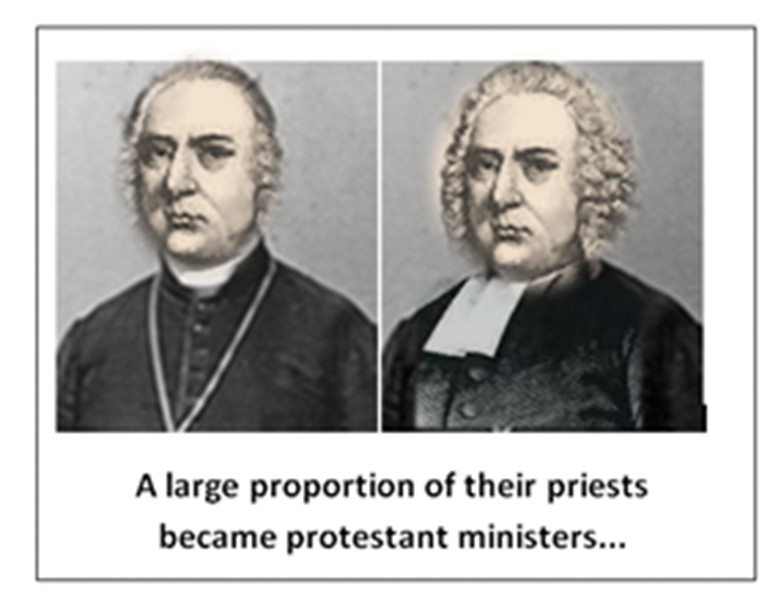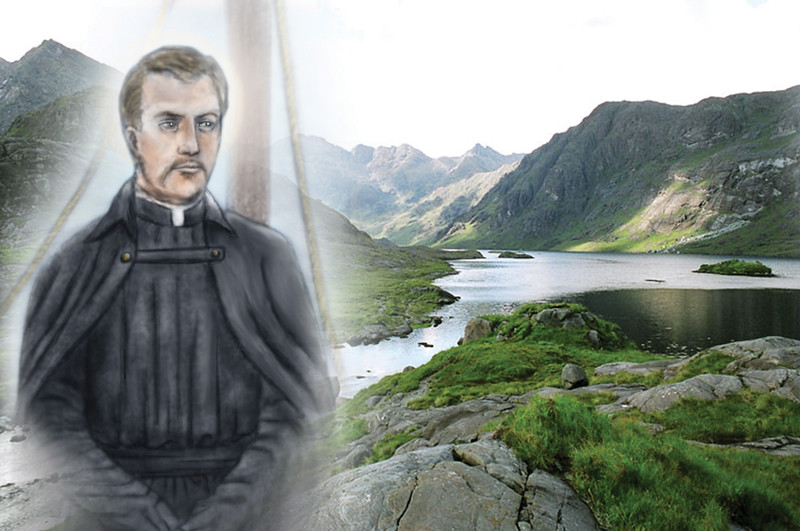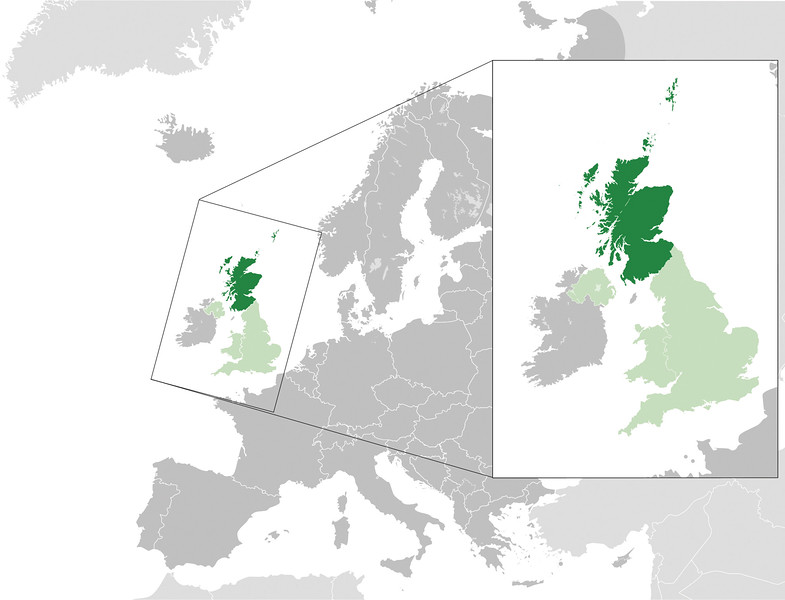by Neil McKay
“In times of great crisis there are two types of men: those who are overwhelmed by the crisis and those who resist the trend of events and so change the course of history.”—Prof. Plinio Corrêa de Oliveira
“REFORM THE CHURCH!”
“MARRIED PRIESTS NEEDED!”
“70% OF CATHOLICS DENY REAL PRESENCE!”
“SECRET LIVES OF PRIESTS!”
“SCANDAL IN THE VATICAN!”
“BISHOPS DISSENT FROM PAPAL AUTHORITY!”
“UPDATING CATHOLICISM!”
Are these the headlines that every 21st century Catholic has become accustomed to reading? Do they fill our hearts with sorrow and despair, as they would if it were our own mothers being maligned? Well, you may be surprised to discover that these same sensationalized headlines would be equally familiar—and heart rending—to any 16th century Catholic. Then, as now, the Bride of Christ was being tested in the fires of scandal and dissension, blasphemy and outright revolt. It was from such confusion and perplexity that God chose to raise up the hero of our story, Saint John Ogilvie, born in the year of Our Lord 1579 on the windswept highlands of Scotland.
Our story begins with the Papal Schism (1378 to 1417) which the Scottish Crown took advantage of to gain control of ecclesiastical appointments within the kingdom. Right away, the State’s usurpation of Church authority should sound familiar to the reader’s ears. This led to the placement of clients and relatives of the king in key positions, including James IV’s illegitimate son Alexander, who was nominated as Archbishop of Saint Andrews at the age of 11, increasing royal influence and also opening the Church to accusations of bribery and favoritism.
In a similar way, laymen with no vocation were given charge of monasteries, and the revenue that came with it. These bishops and abbots in turn appointed clients, friends, and their own sons, born to secret wives, to offices in the church, none of whom had any desire to spiritually feed the flock which materially fed them. As a result, when the Protestant Reformation happened in 1517, sparked by the posting of Martin Luther’s Ninety-Five Theses, only two of the eleven Scottish bishops were considered “papists,” five were indifferent, and four supported the pseudo reformation. A large proportion of priests who denied Rome’s authority became protestant ministers. Being “reformed,” they could now openly live with their secret wives, living in the same house and working in the same church in which they had formally been priests.
The better informed of the lay people and priests fled to the continent, or practiced their faith in secret. Many lay people, while children of the Church through baptism, had been abandoned through lack of apostolic care, and had also been victim to years of lying propaganda financed largely by Protestant England. Courage however comes from conviction, and being uneducated by the Church, they lacked the knowledge that forms convictions. An example of this lack of conviction was reported by the Jesuit priest, Fr. John Leslie, in 1628: “At the time of the change of religion. . . few Catholics had the courage to confess themselves openly. . . it became customary with Catholics to attend heretical worship on stated days; and once a year, though they did not actually receive what is called the Lord’s Supper, they pretended to do so. . . lifting the bread to their lips, they secretly let it fall to the ground. . . and they did not feel that in doing this, they were doing anything wrong. . . taking advantage of some of the remissiveness of some of the priests, who did not reprove this detestable insincerity and impiety as they should have done.” We might say that these poor souls represent those in our opening quotation “who are overwhelmed by the crisis.” This was the Scotland that Saint John Ogilvie was born into.
Saint John Ogilvie—Early Life
His father was a wealthy Calvinist laird, the Scottish term for “landowner” or “lord.” His mother was a faithful Catholic whose two brothers had joined the Jesuits one year before his birth. She died when John was three years old. His father remarried a woman named Mary Douglas. Though she was a Calvinist, she did not have the fanatical hatred of the “old faith” which many of her co-religionists had. She heard the tales about how good the Protestant Reformation was, born in opposition to the abuses of the Catholic hierarchy and priests. . . and yet, and yet. . . the silent witness of those lovely ruins, the noble schools and hospitals spoke to her soul. . . they spoke of men who loved their neighbor as themselves. . . and how many Protestants now possessed one-time church property, their new faith and prosperity inextricably mixed! O what confusing times!
Young John pondered on these thoughts, too. When he turned thirteen his father sent him to the continent to continue his education, which John saw as an opportunity to find answers to the many questions that troubled his soul. Travelling through the Low Countries, through France, Germany and Italy, he observed many Protestant and Catholic peoples, he asked many questions, he studied, he reflected and he prayed. It may also be believed that his Catholic mother, absent from him for over a decade, now exerted her influence on his soul from a greater vantage point than that of any earth-bound mother.
This journey brought him face to face with two particular passages of the Holy Scriptures that had a direct influence on him. The first was from 1 Timothy 2:4, “God wishes all men to be saved and to come to an acknowledgment of the truth.” Being blessed with a keen intellect, John recognized immediately that this Scripture discounted completely the Calvinist doctrine of predestination, which taught that salvation was only for the elect. What an absurdity! The second passage of scripture—the final nail in the coffin of his Calvinist upbringing—was from the Gospel of Saint Matthew 11:28, “Come to me all ye that labor and are burdened and I will give you rest.” With this, John saw that only the sacraments of the Catholic Church could give rest to the soul and the grace necessary for men to have true charity for one another.

A double sketch depicting the crisis of Faith in Scotland during the beginning of the 17th century when Catholic priests changed their cassocks and became Protestant ministers.
Conversion and Vocation
Thus convinced, John, now aged seventeen, was received into the Church—and the Scottish seminary—in Louvain, in 1596. His studies later took him to another center for exiled Scots, under the Benedictines, in Germany. Here, he heard the call to arms, the summons to spiritual warfare, sounded by none other than Saint Ignatius Loyola, founder of the Society of Jesus, otherwise known as the Jesuits.
On November 5, 1599, John entered the Jesuit novitiate at Brunn in Moravia. This was indeed hallowed ground, sanctified first by the unassuming steps of another famous Jesuit, Saint Edmund Campion. A mere quarter of a century previous to our hero’s entrance to the same college, Saint Edmund Campion had prepared for his glorious mission, which ended in his winning the crown of martyrdom.
After eight years of arduous study in England and a firm grounding in Catholic doctrines, which he would later defend with his life, John journeyed to Paris with his uncle, his mother’s brother, Father John Elphinestone, where he was ordained a priest.
Land of His Birth
Meanwhile, the situation in Scotland was becoming even more precarious. Although Catholicism had been outlawed since 1560, protestant King James VI of Scotland was aware of the large numbers of noblemen and commoners who were still loyal Catholics, and was wary of offending them. When Elizabeth I of England died in March 1603, however, James lost no time in rushing off to England, eager to claim the crown and the power that came with it. Having secured the English throne, he declared: “We have no need for papists now!” It was then that the persecution of Catholics began in earnest. In 1611, the two Jesuits remaining in Scotland were pulled from the field by their superiors because of pressing danger.
From the safety of Paris, the noble heart of Fr. John Ogilvie beat with an enthusiastic desire to return to the battle for souls in Scotland. In early 1612, he wrote to his superior asking to be sent to Scotland, but was told the dangers were still too great. He would have to wait. He waited until September of that same year, and then wrote again. What he lacked in patience, he made up for in perseverance. Having received no reply for one month, he waited until October, and then wrote again. Finally, in the summer of 1613, Fr. Ogilvie received the letter he had been waiting for, sending him to the spiritual “front lines” in Scotland.
A short while later, Fr. John Ogilvie took up the alias of John Watson, a horse trader, and arrived in Scotland. Fr. Ogilvie ministered to Catholics in his beloved Highlands for six weeks, and then tackled Edinburgh, the seat of Calvinism, the veritable “lion’s den” if ever there was one. Having a secret list, he visited many Catholics, administering the sacraments, as well as words of encouragement and hope. Wishing to pass on some important and confidential information personally to Fr. Huntly, his superior, Fr. John Ogilvie went first to London and then over to Paris. Fr. Huntly upbraided him for leaving his mission without permission, and sent him back to Scotland, travelling this time with two fellow priests, Fr. Moffat and Fr. Campbell.
From April until October, 1614, Fr. Ogilvie travelled between Edinburgh and Glasgow, selling few horses, but, by teaching the perennial truths of the Church and administering the sacraments, he confirmed the Faith of many, and brought many back to the Catholic Church.
Short Stories on Honor, Chivalry, and the World of Nobility—no. 717












